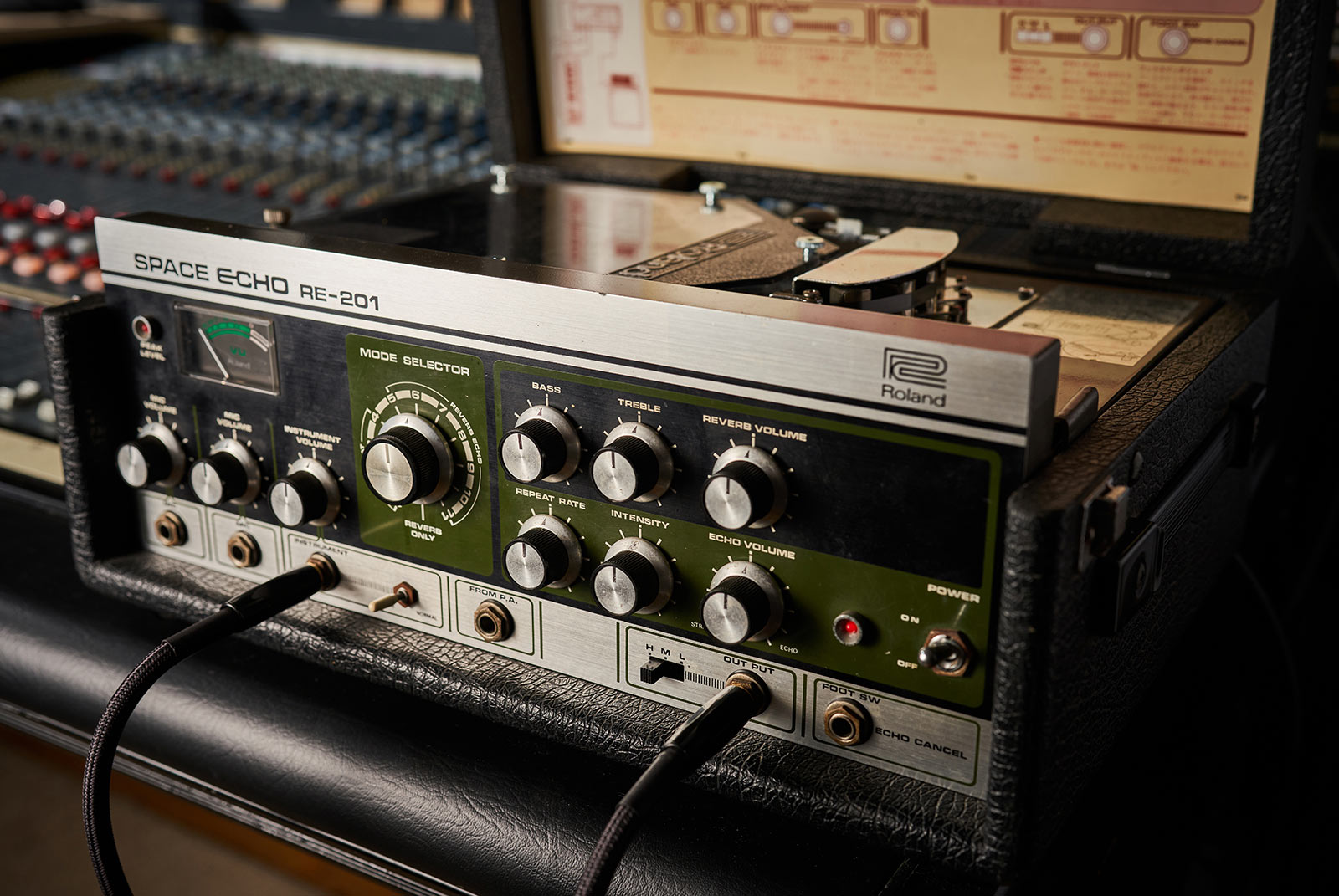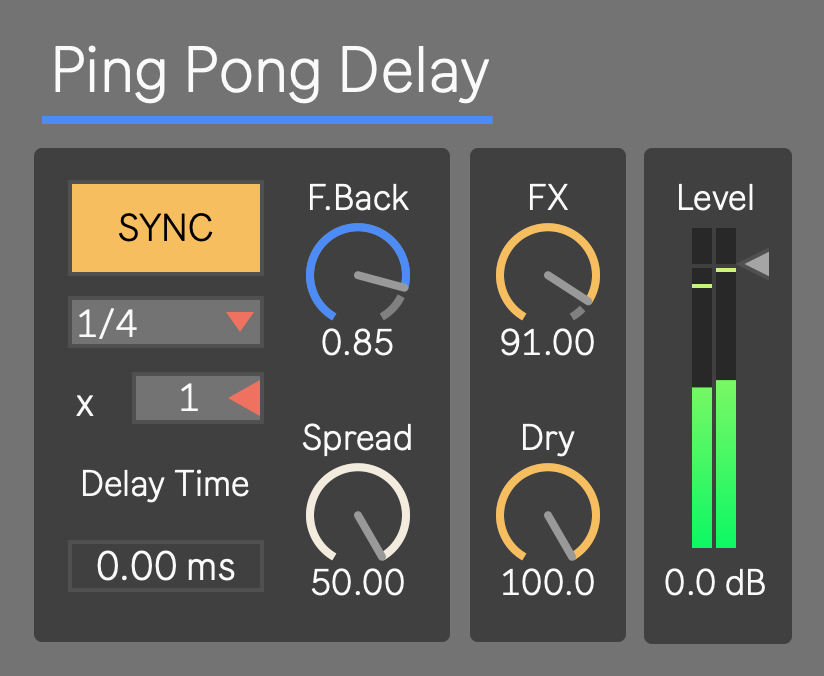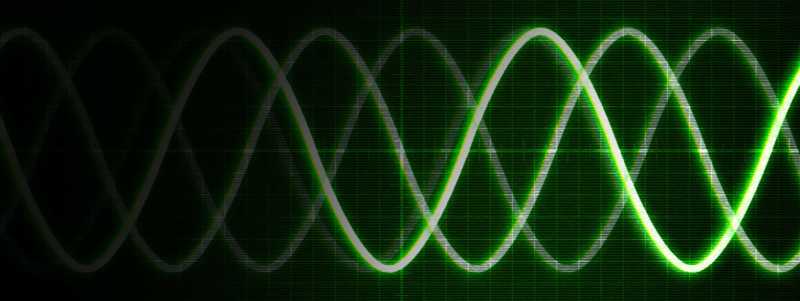Types of Delay – What’s the difference?
Delay (noun):
An audio effect in music production that replicates and plays back an input signal after a predetermined time interval, resulting in a repetition or echo of the original sound.
Delay is a fundamental element within the toolbox of audio production. It holds the power to transform and enhance music in many varied and interesting ways. Understanding the nuances of different delay types opens a realm of sonic exploration for producers and engineers.
In this exploration, we’ll examine seven distinctive types of delay, each wielding its own sonic characteristic.. From the vintage allure of analogue delay to the precise capabilities of digital delays, these variations offer a spectrum of possibilities for shaping and enhancing audio.
Analogue Delay
Vintage analogue delays are often associated with guitar effects peddles and early hardware devices. Sometimes referred to as bucket brigade devices they are revered for their vintage warmth and organic character. It operates using analogue circuitry, employing components like capacitors and resistors to create delayed repetitions of the audio signal. The result is a natural, slightly degraded echo, often characterized by its rich tonality and subtle imperfections.
The advantages of analogue delay lie in its sonic character, delivering a musical and sought-after warmth. However, it’s essential to note its limitations; analogue delays might lack the precise control and longer delay times available in digital counterparts. Nonetheless, its distinct sonic qualities make it a staple in various music genres.
Applications of analogue delay are diverse, spanning from creating spacious guitar solos to adding depth to vocals or atmospheric textures in electronic music. Its ability to impart a vintage vibe or a touch of warmth to a sterile digital signal remains unparalleled.
Famous and much sought-after examples of vintage analogue delays include the Electro-Harmonix Memory Man and the Boss DM-2.

Digital Delay
Contrasting its analogue counterpart, Digital Delay harnesses digital signal processing to produce precise and pristine echoes. By converting the input signal into a digital format, these delays offer unparalleled accuracy in replicating and manipulating audio.
Digital delay units provide extensive control over parameters such as delay time, feedback, and modulation. This precision allows for exact replication of audio with minimal degradation, making it a go-to choice for those demanding clean, articulate repeats.
The main advantages of Digital delays are it’s versatility and accuracy, enabling users to achieve precise delay times, high fidelity, and often longer delay durations. Moreover, features like tap tempo, various presets and modulation options contribute to its popularity among modern producers and performers.
However, while digital delays excel in accuracy, some would argue they lack the warmth and character inherent in analogue delays. Their ability to seamlessly integrate within digital audio workstations (DAWs) and offer a wide range of effects and settings (including models of analogue and tape delay) compensates for this perceived trade-off.
Tape Delay
Steeped in history, Tape Delay represents one of the earliest forms of delay. This method involves passing an audio signal through a tape machine with multiple heads. The delayed signal emerges after a short interval due to the physical distance the tape travels.
The charm of tape delay lies in its unique sonic characteristics. It introduces subtle imperfections like wow, flutter, and tape saturation, imparting a distinct colour to the delayed signal. These imperfections, once considered drawbacks, have now become sought-after qualities for their vintage appeal.
Despite its vintage allure, tape delay comes with practical limitations. Maintenance of real tape delay units is cumbersome, and achieving precise, repeatable delay times can be challenging. Nonetheless, these limitations contribute to its distinct sound and are often sought after for creative purposes.
In modern music production, emulations of tape delay effects have become prevalent in plugins and digital processors. These emulations aim to replicate the distinctive characteristics of tape delays while offering the convenience and flexibility of digital technology.
Tape delay finds its place across various musical genres, most famously in the world of Reggae. Dub pioneers such as Lee Scratch Perry, King Tubby and The Scientist used tape delay almost as an instrument.
The most famous and iconic Tape Echo units were made by Roland. The Roland Re-201 Space Echo was launched in 1974 and is now a much-prized piece of studio kit. Other notable tape echos include the Maestro Echoplex EP-3 and WEM Copycat.

Modulated Delay
Modulated delay extends the traditional delay effect by incorporating modulation elements, such as chorus or flanger, into the delayed signal. This fusion introduces movement, depth, and texture, transforming simple echoes into dynamic, evolving soundscapes.
The addition of modulation to delay creates a sense of motion within the echoes. By modulating parameters like pitch, amplitude, or time, modulated delays produce a shimmering, swirling effect that enriches the delayed signal, adding a lush and ethereal quality.
One of the primary advantages of modulated delay lies in its ability to infuse a sense of spatial depth and dimension to the sound. The modulated repeats create a sense of movement around the audio, contributing to a more immersive auditory experience.
Musically, modulated delay finds its applications in creating ambient textures, enhancing vocals, and adding a sense of depth to guitars or synthesizers. Its ability to evoke a sense of space and movement makes it a valuable tool for artists seeking to craft expansive soundscapes or experimental sonic environments.
Ping Pong Delay
Ping-pong delay introduces a captivating stereo effect by bouncing the delayed signal between two or more audio channels. As the delayed sound alternates between speakers or channels, it creates a sense of movement and spaciousness within the audio landscape. This creates an immersive, three-dimensional sound experience.
Musically, ping pong delay is employed to create a sense of width and space in a mix. It’s often used on instruments, vocals, or atmospheric elements to add depth and movement. In electronic music, it’s a favoured tool for generating rhythmic patterns and enhancing the stereo image. It can also help to bring elements out of a mix that may otherwise remain buried.

Reverse Delay
Reverse delay, an unconventional yet captivating effect, plays the delayed signal backwards. This creates an otherworldly and surreal auditory experience. This effect flips the original audio, producing a reversed echo that can range from subtle and mysterious to overtly dramatic.
The process involves capturing the input signal, delaying it, and then playing it back in reverse. This reversal creates an intriguing effect. The delayed sound seems to lead the original, producing an avant-garde and unique sonic atmosphere.
Musically, reverse delay finds application in adding intrigue and mystery to vocals, guitars, or various sound effects. It’s often used to create an otherworldly ambiance, lending an ethereal quality to the audio that can evoke emotions or captivate the listener’s attention.
Producers and sound designers leverage reverse delay to add depth and interest to specific sections of a song or to create impactful transitions. Its ability to generate unconventional and mesmerizing soundscapes makes it a sought-after effect for experimental and avant-garde musical compositions.
Multi-Tap Delay
Multi-tap delay is a versatile delay type that involves the creation of multiple delay lines or taps. Each tap produces its own distinct repetition of the audio signal. This technique enables the generation of complex rhythmic patterns, textures, and layered echoes.
The defining feature of multi-tap delay lies in its capability to create a multitude of delayed repetitions at various intervals. These individual taps allow for precise control over each repetition’s timing, level, and feedback, offering a canvas for intricate and evolving sonic landscapes.
With multi-tap delay units, musicians and sound designers can experiment with cascading delays, rhythmic patterns, or create evolving textures by adjusting the parameters of each tap. This flexibility opens avenues for creating captivating and evolving compositions. The complexity and versatility of multi-tap delays make them indispensable in various genres, from ambient and experimental music to electronic and modern pop productions.
Summary
Our exploration into the diverse realms of delay effects has revealed a rich tapestry of sonic possibilities, each type offering a unique set of characteristics and applications within the realm of audio production.
Understanding the nuances of these delay types can help when selecting and auditioning the right effect for a given song or track element. Whether aiming for vintage warmth, spatial depth, or avant-garde experimentation, the world of delay effects offers a realm of endless possibilities.
Remember – RouteNote Create subscriptions start from as little as $2.99. You also get 10 FREE credits to spend on samples along with access to our FREE sample pack bundle when you sign-up!
.
